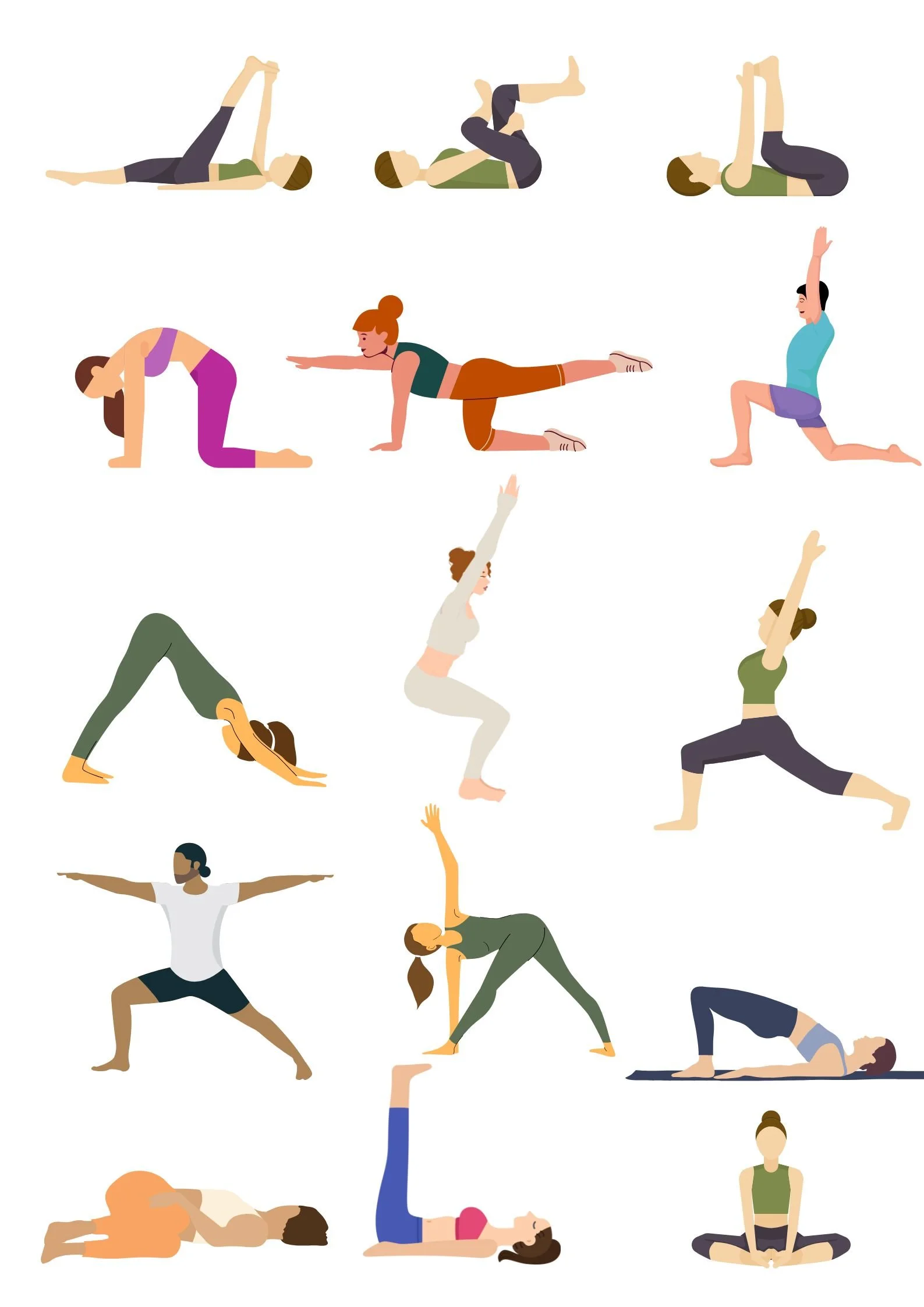How to Use Yoga to Relieve and Prevent Low Back Pain
Many people start their yoga journey seeking relief from lower back pain. According to the Department of Health and Human Services and the American College of Physicians, both yoga and physical therapy are highly recommended as alternatives to surgery for managing chronic low back issues. As yoga teacher Jason Crandell wisely says, “there’s no one-size-fits-all formula for using yoga for back pain.”
Whether you're new to yoga or already practicing, it's essential to approach the practice mindfully to relieve tension, build strength, and increase mobility in the spine. Here are key ideas and yoga poses that can support a healthier back and help you move with more ease.
1. Start Supine and Find Your Neutral Spine
One of the most accessible ways to begin is on your back. Lying down allows you to establish a neutral spine, a foundational alignment that helps prevent strain while opening the hips and hamstrings.
Reclined Hip and Hamstring Work: These gentle poses create flexibility in the hips and hamstrings without overloading the lower back. Start with Supine Hand to Big Toe Pose to open up the hamstrings. Ankle to Knee Pose targets the outer hips, and Happy Baby Pose can stretch the adductors (inner thighs), creating space around the pelvic area.
2. Strengthen and Mobilize Your Entire Core
While stretching is important, strength is just as crucial in stabilizing the spine. Core work not only strengthens the muscles around your lower back but also helps improve posture, which is key to long-term back health.
Cat/Cow or Cat/Table Top Pose provides essential spinal mobility, allowing the spine to move through flexion and extension, promoting fluidity. Sunbird and Plank Variations (including forearm plank or plank on the knees) engage the abdominals and help to build strength in the entire core. Locust Pose (or Crocodile Pose) can strengthen the upper back and hamstrings as well.
3. Open the Hips and Quads
Tight hips and quads can exacerbate lower back discomfort, so it’s essential to lengthen and strengthen these areas too. A well-balanced yoga practice involves strengthening the front of the body (quads) as well as the back (hamstrings).
Try incorporating Lunge Pose to stretch the quads and the front of the pelvis. Downward Facing Dog—whether on the mat or with your hands on the wall—is another excellent pose to elongate the spine and stretch the hamstrings.
4. Move Mindfully: Make the Poses Work for You
When practicing yoga with low back issues, it’s crucial to move with awareness, especially in poses that involve hip rotation or deep backbends. Here are a few pointers to keep in mind:
Step Back from Chair Pose to Crescent Lunge or Warrior 1 to avoid the forward fold that can strain the lower back.
Warrior 1.5: Take your feet wider apart and allow the hips to rotate forward only until they stop—there’s no need to force your hips to square, as Jason Crandell recommends.
In Warrior 2, Extended Side Angle, and Triangle Pose, activate the legs and feet to maintain a long, steady spine. Limit the hip rotation to your natural range of motion—don’t push beyond what feels comfortable.
For Bridge Pose, start with your arms overhead to activate the hips rather than the chest. This helps to maintain alignment and avoid compressing the lower back.
Supine Twist (with one leg or both) is a great way to release tension in the outer hips and gently stretch the spine.
5. Restore and Relax
After strengthening and stretching, it's important to give your body a chance to rest and restore. These restorative poses will help release any tension that may have accumulated during the practice.
Legs Up the Wall and Constructive Rest Pose are two wonderful ways to release lower back tension and relax the nervous system.
Don’t forget to end your practice with Meditation to calm the mind and bring awareness back to your body.
Important Considerations
While yoga can be a powerful tool for relieving and preventing low back pain, it's important to remember that this practice is designed for individuals with chronic low back pain and should not replace medical advice or treatment for acute flare-ups. Always consult with your healthcare provider before beginning any new movement practice, especially if you're dealing with serious back issues or injury.
Low back pain is a complex issue, and everyone’s body responds differently. Take it slow, listen to your body, and focus on building a yoga practice that works for you.
Final Thoughts
Yoga can be a great ally in managing and preventing low back pain, but, as with any therapeutic practice, it’s important to approach it with care. By focusing on spinal neutrality, core strength, and mindful movement, you can build a practice that supports your back and promotes overall well-being. And remember, if you’re unsure about any of the poses or have concerns about your back, don’t hesitate to consult a healthcare professional or a certified yoga instructor who specializes in therapeutic yoga.
Yoga Sequence for Low Back Pain


